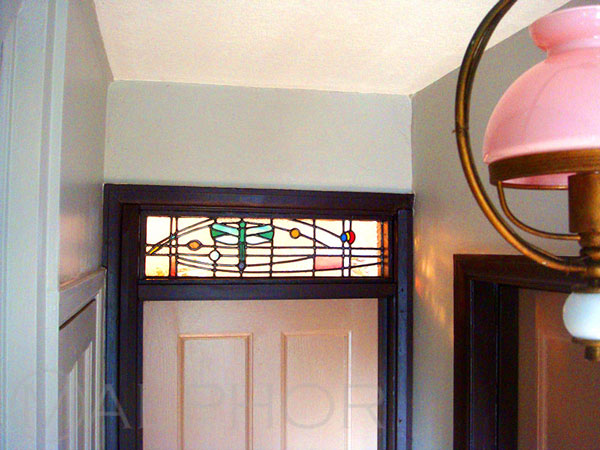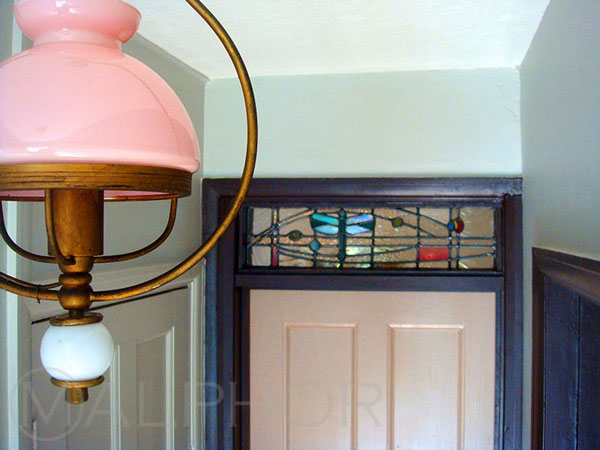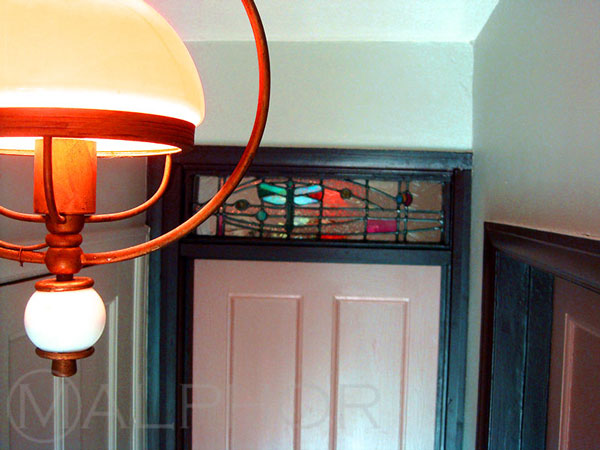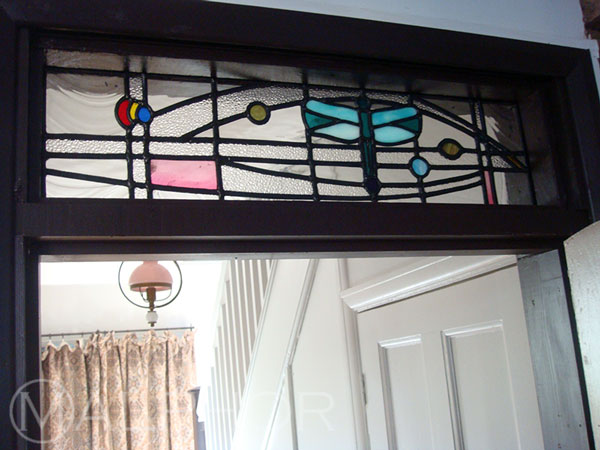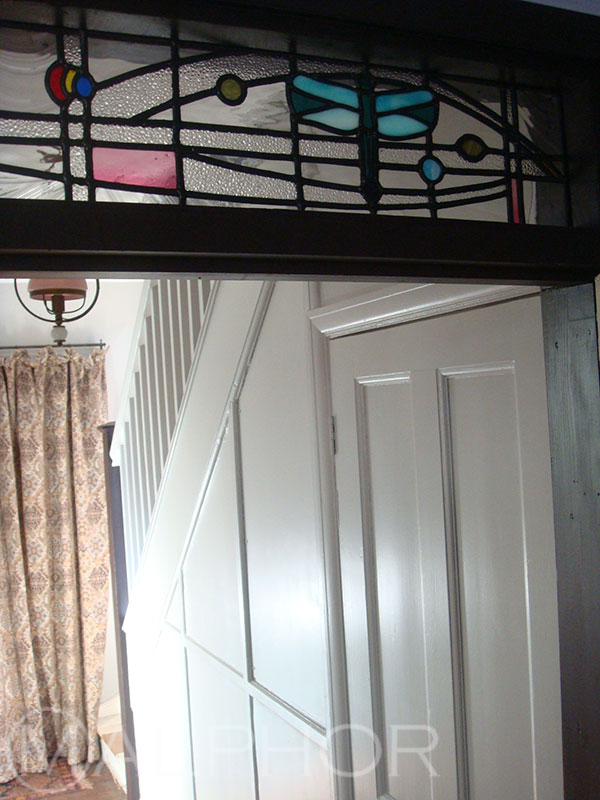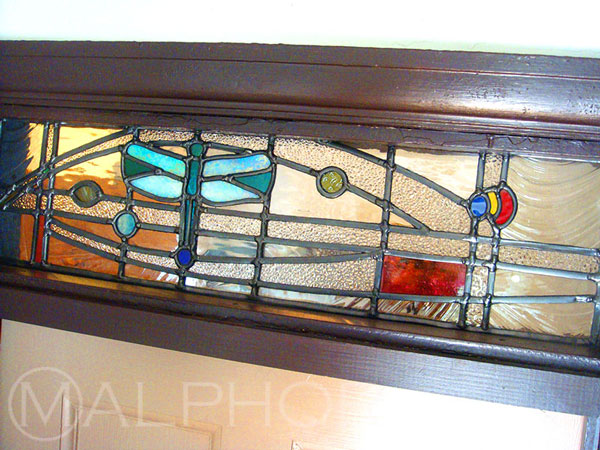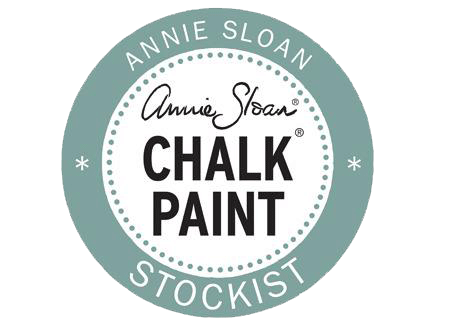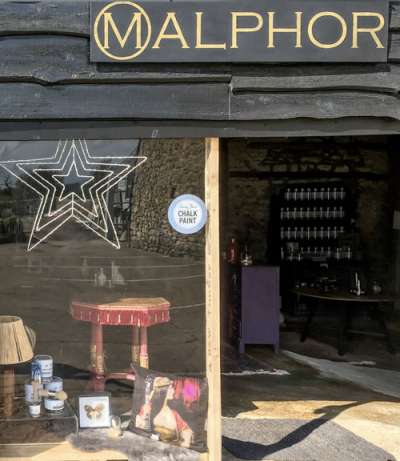I enlist the help of local stained glass expert Sarah Glover, a wonderful artist and such an inspiration. What's more, she likes to pass on her secrets and runs a series of short courses. I'm in! I create a design to scale in InDesign. I want something traditional yet 'modern', something to recall the Arts&Crafts movement. Above all, I must have a dragonfly! I submit a design to Sarah for remarks, as I am widely unaware of stained glass technical requirements. After a few adjustments, I am ready to go.

I find working with glass slightly daunting - what if I cut myself? - but with Sarah's help, I quickly built the confidence to cut, groze and grind the glass into shapes. It is a time-consuming process but the excitement rises at every stage.

Choosing the glass proves a challenge, as I have to imagine what it will look like once the light filters through. Situated between two dark rooms, little light will hit the glass, so I want a lot of clear glass with splashes of colour. I shall play with textures for maximum effect.

Once all the glass segments are cut and fit nicely together, such a puzzle, I can begin the leading. The lead came (a length of lead that has an I-shaped cross-section and into which the glass comes and nests) is cut and shaped around each piece of glass. I start with the bottom left corner and work my way up and towards to the right, bit by bit.

Once all the came is in place, I can solder it together at every intersection. I then fill in any gaps between the glass and the lead with cement to strengthen the structure of the glass panel. Finally, I polish the lead in a dark wax and bring it to a shine.

Tada! After mounting the panel, I can stand back and admire my work. I must say, I hold a tear in my eye. If you ever entertained the idea of learning about stained glass and you are based in Oxfordshire, then I recommend you get in touch with Sarah Glover through her website at www.sarahsstainedglass.co.uk, I couldn't be more pleased I did.
